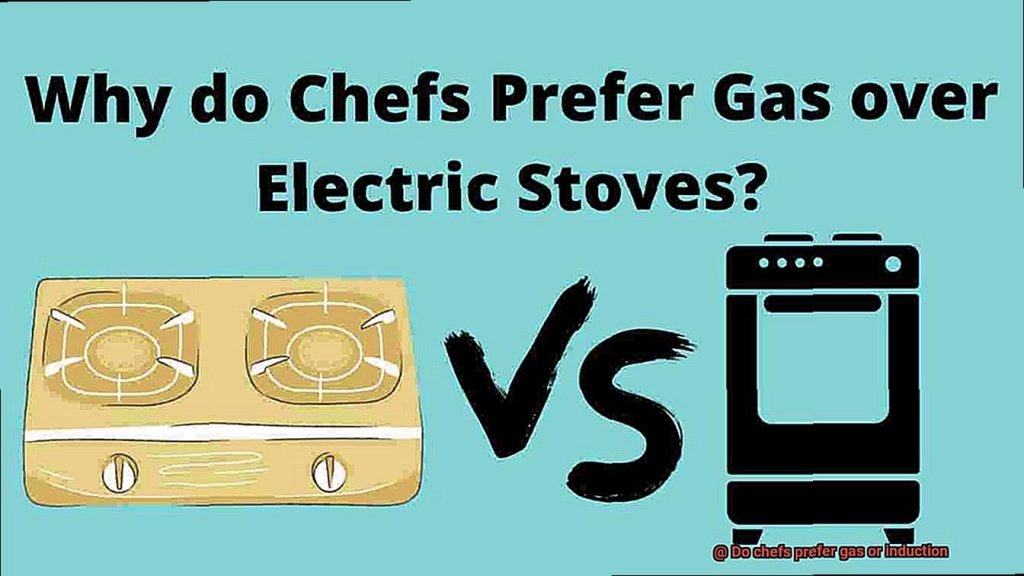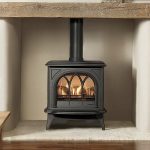Are you a cooking enthusiast who’s always wondered whether professional chefs prefer gas or induction stovetops? Well, the answer is not as simple as you might think. This age-old debate has been raging on for years, with chefs taking strong stances on both sides. And it’s no wonder – gas and induction ranges each have their own unique advantages and disadvantages that make them suitable for different cooking styles.
Gas stovetops have been the go-to choice for chefs for decades, offering precise temperature control and instantaneous heat. They’re perfect for adjusting cooking temperatures on the fly, which is crucial when juggling multiple dishes at once. Plus, the visible flame provides a visual cue that helps chefs stay in control of their cookware.
However, induction stovetops are quickly gaining popularity thanks to their lightning-fast heating capabilities and energy efficiency. Using electromagnetic fields to heat up pans means that they provide precise temperature control similar to gas but without any open flames. One of the most significant benefits of induction cooking is its safety aspect – these stovetops remain cool to the touch even during use, reducing the risk of accidental burns and fires.
So what do top chefs think about this debate? Do they prefer gas or induction? The answer is not straightforward since it depends on personal preference and cooking style. In this blog post, we’ll explore in-depth the pros and cons of both types of stovetops. We’ll also hear from some of the world’s most renowned chefs on why they choose one over the other. Get ready to learn everything there is to know about this hotly debated topic.
Contents
Pros and Cons of Gas Stoves
When it comes to cooking, choosing the perfect stove is crucial. Gas stoves have been a beloved option for chefs for many years, offering a plethora of benefits. However, they also come with some drawbacks that need to be considered.
Starting with the advantages, gas stoves offer instant heat, allowing chefs to quickly adjust the temperature. This is essential when cooking multiple dishes at once or when quick adjustments are needed. Moreover, they provide precise control over the amount of heat being used, which is crucial for delicate dishes.
Another advantage of gas stoves is their cost-effectiveness. They are generally less expensive to operate than electric stoves, saving chefs a significant amount of money in the long run. Additionally, for chefs who grew up cooking on gas stoves, using them feels more comfortable and familiar.
However, gas stoves also have some disadvantages that need to be taken into account. One major concern is safety as they can pose a risk if not properly maintained or if there is a gas leak. Another drawback is their uneven heat distribution, which can lead to uneven cooking. Cleaning gas stoves can also be more challenging due to grates and burners that need to be removed and cleaned separately. Finally, gas stoves contribute to greenhouse gas emissions, which can harm the environment.
Ultimately, the choice between gas and induction comes down to personal preference and cooking style. Chefs who prefer gas stoves appreciate the instant heat and precision control they provide. Nevertheless, those who prefer induction may be drawn to the safety features and energy efficiency of these newer appliances.
Pros and Cons of Induction Stoves
Induction stoves have taken the culinary world by storm, with their cutting-edge technology and energy-saving benefits. These appliances use magnetic fields to create heat, making them faster and more energy-efficient than traditional gas stoves. But before you make the switch in your professional kitchen, let’s explore the pros and cons of using induction stoves.
Pros
- Energy efficiency: Induction stoves are renowned for their energy efficiency. They only heat up the cookware on top of them, not the surrounding air, which means they waste less energy and save you money on your utility bills.
- Speed: In a fast-paced kitchen environment, speed is everything. Induction stoves heat up much faster than gas stoves, allowing chefs to get their dishes cooked faster and more efficiently.
- Safety: Induction stoves are safer than gas stoves because they don’t produce an open flame. This reduces the risk of fires and burns in the kitchen, making them an excellent choice for busy restaurants.
- Temperature control: Precise temperature control is essential for cooking delicate dishes like sauces and custards. Induction stoves offer this feature, allowing you to adjust the heat quickly and easily.
Cons
- Cost: Induction stoves are generally more expensive than gas stoves, which can be a significant investment for home cooks or small restaurants. However, the long-term energy savings can help offset the initial cost.
- Compatibility: Induction stoves only work with certain types of cookware made from magnetic materials like cast iron or stainless steel. Chefs may need to replace some of their existing cookware if they switch to an induction stove.
- Noise: Induction stoves can be noisy at higher power levels, which can be distracting in a busy kitchen. However, this is something that chefs can adjust to over time.
- Learning curve: Cooking on an induction stove is different from cooking on gas stoves, and chefs may need time to adjust to the new technology. It may take some practice to get the hang of it, but the results are well worth it.
Cuisine-based Preferences
For chefs, their preferred cooking method is often dictated by the type of cuisine they specialize in.
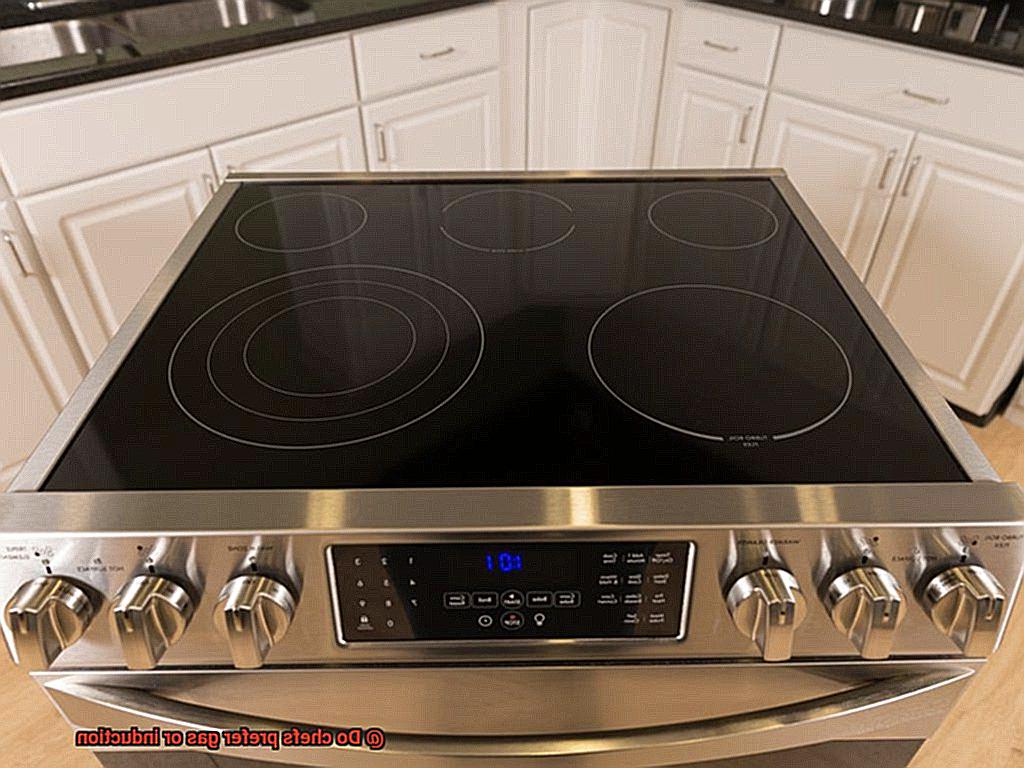
Take, for example, Asian cuisine. Induction cooktops are the go-to choice for many chefs due to their precise temperature control and rapid heating capabilities. Stir-frying or sautéing delicate ingredients requires a precise touch, and induction cooktops deliver just that. Furthermore, their safety features make them an excellent choice for busy kitchens where accidents can happen.
In contrast, chefs who specialize in Mediterranean cuisine often prefer gas cooktops. The open flame allows them to impart a smoky flavor to their dishes, which is a hallmark of Mediterranean cooking. Additionally, the versatility of gas cooktops makes them ideal for cooking with cast iron pans, which are commonly used in this style of cooking.
It’s worth noting that personal preference also plays a role in a chef’s decision between gas and induction cooktops. Some chefs prefer induction cooktops for their precision and safety features, while others prefer gas for their traditional cooking techniques and overall versatility.
Safety Considerations
Cooking is a thrilling art, but it also has the potential to be hazardous if safety considerations are not taken into account. As an expert in this field, I want to share some vital safety considerations for both gas and induction cooktops.
Starting with gas cooktops, they utilize an open flame, which can be a fire hazard if not handled carefully. It’s imperative to keep flammable materials away from the cooktop and never leave pots or pans unattended while cooking. Moreover, gas cooktops can heat up rapidly and stay hot for some time even after being turned off, posing a burn risk. Thus, using oven mitts or potholders when handling hot cookware is critical.
Another essential safety consideration when using gas cooktops is proper ventilation. Since they require an open flame to operate, they produce harmful gases such as carbon monoxide. To avoid the accumulation of these gases, it is important to use a range hood or open a window while cooking.
Now let’s discuss induction cooktops. They are deemed safer than gas cooktops because they do not use flames and do not emit harmful gases. However, it’s crucial to note that induction cooktops only work with specific types of cookware that have a magnetic bottom. This means that aluminum or copper cookware cannot be used on induction cooktops.
One of the significant benefits of induction cooktops is that they cool down instantly when the cookware is removed from the surface. This significantly reduces the risk of burns compared to gas cooktops.
Factors to Consider When Choosing a Stove
Choosing the perfect stove can be a daunting task, especially when it comes down to deciding between gas and induction. As an expert, I’ve done the research and compiled a list of factors you should consider before making your decision.
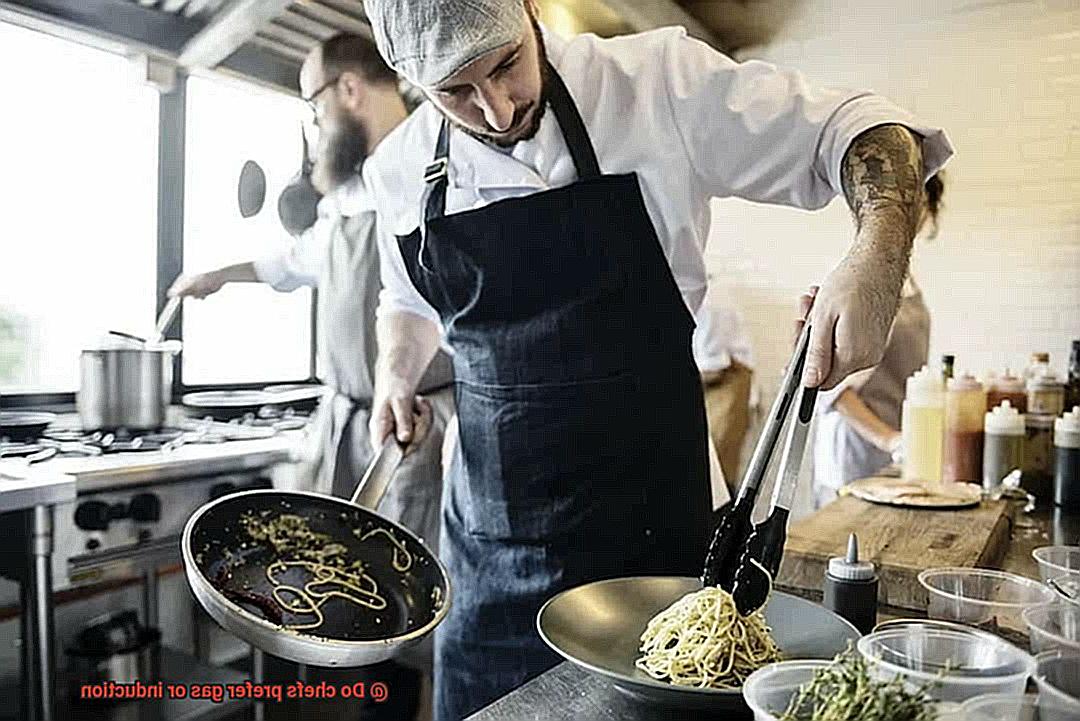
Fuel type is one of the most significant factors you should consider when choosing a stove. Gas stoves have been a chef’s favorite for many years, thanks to their instant heat and precise temperature control. They are also more affordable than induction stoves and easy to use. However, gas stoves can be challenging to clean, and the open flame poses a danger if not used properly. Additionally, gas stoves may not be as energy-efficient as induction stoves, which could result in higher energy bills over time.
Induction stoves use electromagnetic energy to heat up cookware directly, providing faster heating times and greater temperature precision. They are also considered safer and easier to clean than gas stoves. However, induction stoves require specialized cookware made from ferromagnetic materials such as cast iron or stainless steel, which could mean investing in new pots and pans. Induction stoves can also be more expensive than gas stoves, and they may not work well in areas with frequent power outages.
When it comes down to choosing between gas and induction, personal preference and specific needs as a chef or home cook play a critical role. If you value precise temperature control and affordability, then gas stoves may be the way to go. But if you prioritize faster heating times and an easier-to-clean surface, then induction may be the better option for you.
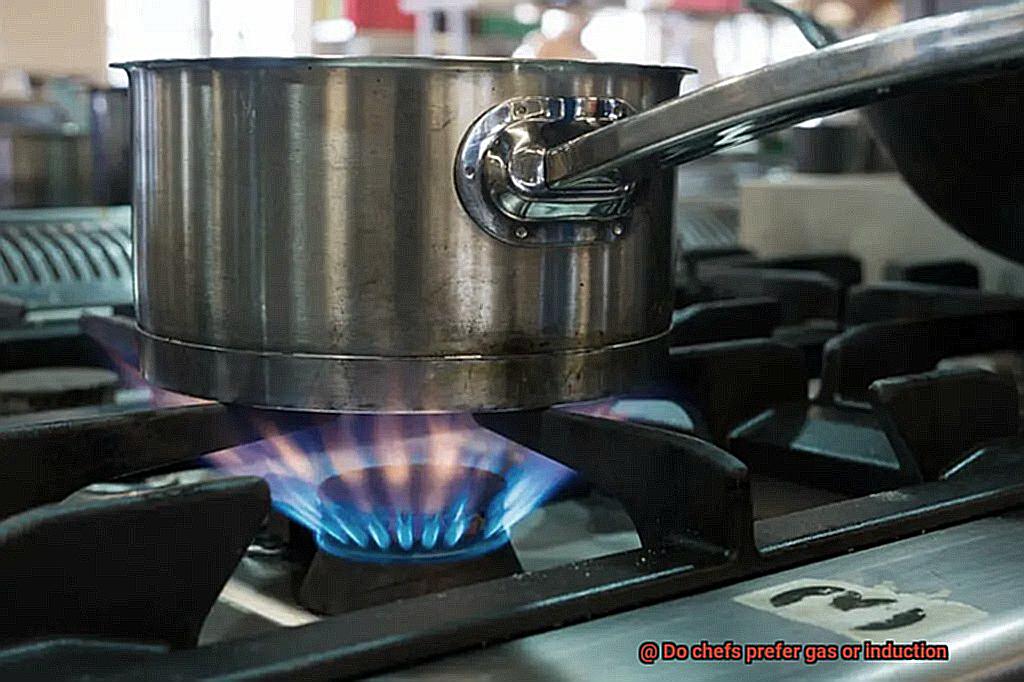
Expert Advice on Choosing Between Gas and Induction Stoves
Gas stoves have been around for decades and are known for their versatility. They offer precise temperature control and can be used for a variety of cooking techniques, including sautéing, simmering, and roasting. Gas stoves also provide instant heat and give you that classic feel of seeing the flame. However, they can be challenging to clean and are less energy-efficient than induction stoves.
On the other end of the spectrum, induction stoves use electromagnetic technology to heat cookware directly. This results in faster heating times and more consistent temperature control. Induction stoves are also safer and easier to clean than gas stoves. However, they require specialized cookware made from magnetic materials, which can add to the overall expense.
When deciding between gas and induction stoves, it ultimately depends on your personal cooking style and preferences. Do you want the traditional feel of a gas stove or the precise temperature control of an induction stove? Consider your budget and compatibility with existing cookware before making a decision.
To help you further in your decision-making process, here are some additional factors to consider:
- Energy Efficiency: Induction stoves tend to be more energy-efficient than gas stoves, which can save you money on your utility bill in the long run.
- Cooking Speed: Induction stoves heat up faster than gas stoves, making them a great option for those who value speed in their cooking.
- Noise Level: Gas stoves tend to make more noise than induction stoves due to the sound of the gas flame. If you prefer a quieter cooking experience, induction may be a better option for you.
- Safety: Induction stoves are safer than gas stoves as they do not produce an open flame. This is especially important if you have young children or pets in the home.
Tips for Cooking with Gas or Induction Stoves
Whether you’re a seasoned chef or a novice cook, choosing the right stove can make all the difference. Gas and induction stoves are two popular options, each with its own advantages and disadvantages. In this post, we’ll explore those differences in more detail and provide tips for making the most of your cooking experience.
Advantages of Gas Stoves
Gas stoves offer instant heat and precise temperature control, making them ideal for tasks like searing and sautéing. The visible flame also allows for easy monitoring of heat levels. Plus, for those who have used gas stoves before, they can offer a sense of familiarity.
Disadvantages of Gas Stoves
One disadvantage of gas stoves is that they can be less energy-efficient than induction stoves. Heat can escape from the sides and bottom of the pan, leading to wasted energy. Additionally, they require a gas line, which may not be available in all areas. There is also a safety concern with an open flame.
Tips for Cooking with Gas Stoves
To optimize your gas stove experience, use flat-bottomed cookware without warping to ensure even heat distribution. Keep the flame at the appropriate height for your pan size and avoid using damaged pans that can cause uneven heating.
Advantages of Induction Stoves
Induction stoves work by using magnetic fields to heat up your cookware directly, making them incredibly energy-efficient and fast to heat up. They also offer precise temperature control and are safer than gas stoves since there is no open flame.
Disadvantages of Induction Stoves
Not all cookware is compatible with induction stoves, so you may need to invest in magnetic cookware or test your current pots and pans for compatibility. Induction stoves may also take some getting used to as they heat up quickly and can be more sensitive to temperature adjustments.
Tips for Cooking with Induction Stoves
Use flat-bottomed cookware made of magnetic materials like stainless steel or cast iron. Avoid dragging pans across the surface of the stove to prevent scratches. Pay close attention to temperature controls, as induction stoves heat up quickly.
Conclusion
rDOONBrWFnc” >
Conclusion
To wrap up this ongoing debate, it’s clear that chefs’ preferences for gas or induction stovetops are subjective. Each option has its own distinct advantages and drawbacks, making it a matter of personal taste and cooking style. Gas stovetops provide precise temperature control and immediate heat adjustments, granting chefs complete control over their cooking process. They also offer an affordable solution with visible flames that help keep cookware in check. However, they pose safety concerns if not adequately maintained, have uneven heat distribution, and contribute to greenhouse gas emissions.
On the other hand, induction stovetops are rapidly gaining popularity due to their lightning-fast heating capabilities and energy efficiency. They offer similar precision in temperature control as gas but without any open flames, making them safer to use. Induction stovetops are also easier to clean than gas stovetops but require specialized cookware made from magnetic materials like cast iron or stainless steel.
Ultimately, choosing between gas and induction comes down to individual preference and cooking style. Chefs who specialize in Asian cuisine tend to prefer induction cooktops while those who specialize in Mediterranean cuisine often lean towards gas cooktops. Safety considerations should also be taken into account when deciding between these two options.
When contemplating between gas or induction stoves, factors such as energy efficiency, cooking speed, noise level, safety features, budget, compatibility with existing cookware should be considered before making a final decision. Regardless of which option you choose, following tips such as using flat-bottomed cookware can help optimize your cooking experience.
In conclusion, whether you’re a professional chef or a home cook looking for the perfect stove for your culinary creations – there is no definitive answer on whether chefs prefer gas or induction stovetops.

